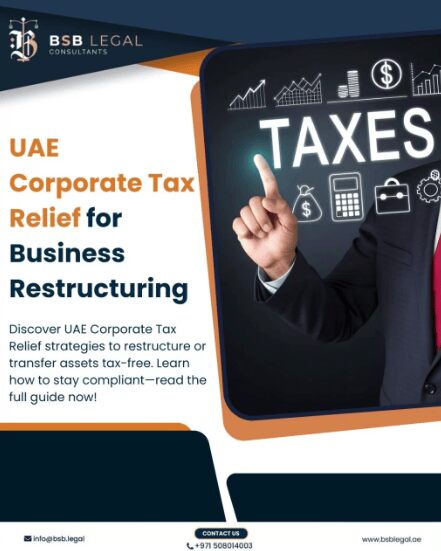


Discover UAE Corporate Tax Relief strategies to restructure or transfer assets tax-free. Learn how to stay compliant—read the full guide now!
Restructuring and expanding a business can spark concerns about corporate taxes, especially in the UAE’s evolving regulatory landscape. Fortunately, the UAE Corporate Tax Law offers key relief provisions for business transfers and reorganizations. This guide breaks down how to leverage them effectively and stay tax-compliant while reshaping your business.
Restructuring often involves moving assets between subsidiaries. Under normal circumstances, such transfers could trigger taxable gains. However, the UAE Corporate Tax Law provides relief for transfers within a Qualifying Group, enabling smoother internal shifts without tax consequences.
To qualify, companies must meet these conditions:
Eligible intra-group asset transfers are recorded at net book value, meaning no gain or loss is recognized at the time of transfer. However, if the asset is later sold outside the group within two years, the initial transaction is re-evaluated at market value, and tax may be due.
For larger changes—like mergers, spin-offs, or division transfers—the law introduces Business Restructuring Relief to encourage growth and innovation without immediate tax barriers.
This relief is available when a taxable person transfers an entire business or an independent division to another taxable entity in exchange for shares or ownership interests. For example, if Company A merges with Company B and shareholders receive equity in return, the transaction may be tax-exempt.
To utilize restructuring relief, the following must be met:
Just like group transfers, these transactions are valued at net book value. Plus, the acquiring company can carry forward unused tax losses from the transferor, a substantial benefit in long-term tax planning.
⚠️ Note: If shares or transferred business assets are sold to outsiders within two years, the tax relief may be revoked through market-value reassessment.
For UAE-based businesses undergoing structural changes, these tax reliefs are strategic tools to reduce corporate tax liabilities. However, compliance hinges on meeting detailed conditions, making professional advice essential.
